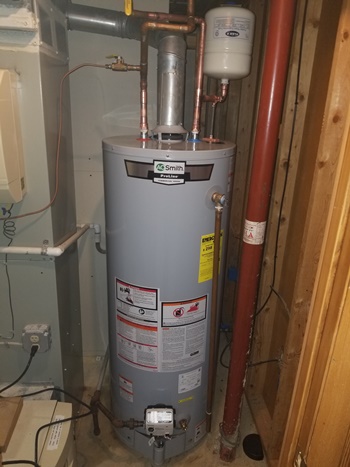Just about everyone will have their personal way of thinking on the subject of Water Heater Maintenance Tips You Can't Afford to Forget.

Warm water is vital for daily convenience, whether it's for a rejuvenating shower or cleaning meals. To ensure your hot water system runs successfully and lasts much longer, normal upkeep is essential. This post provides practical pointers and understandings on exactly how to maintain your home's warm water system to stay clear of interruptions and costly repairs.
Intro
Preserving your home's hot water system may seem daunting, but with a couple of simple actions, you can ensure it runs smoothly for years ahead. This guide covers everything from comprehending your hot water system to do it yourself maintenance pointers and understanding when to call in specialist help.
Relevance of Preserving Your Warm Water System
Routine upkeep not only expands the life-span of your hot water system however also guarantees it operates effectively. Neglecting maintenance can bring about decreased performance, higher energy expenses, and even premature failing of the system.
Signs Your Hot Water System Demands Maintenance
Knowing when your hot water system requires focus can prevent major problems. Look out for indications such as inconsistent water temperature, weird noises from the heating unit, or corroded water.
Understanding Your Warm Water System
Prior to diving right into maintenance tasks, it's handy to understand the fundamental parts of your hot water system. Usually, this consists of the water heater itself, pipes, anode poles, and temperature level controls.
Monthly Maintenance Tasks
Routine month-to-month checks can help catch small concerns before they escalate.
Purging the Hot Water Heater
Purging your hot water heater eliminates sediment accumulation, boosting efficiency and prolonging its life.
Checking and Changing Anode Rods
Anode poles prevent corrosion inside the storage tank. Checking and changing them when broken is essential.
Examining and Changing Temperature Level Setups
Readjusting the temperature settings guarantees ideal performance and security.
DIY Tips for Maintenance
You can execute several upkeep jobs on your own to keep your hot water system in leading problem.
Looking for Leaks
Frequently examine pipes and links for leakages, as these can result in water damage and greater costs.
Checking Pressure Relief Valves
Examining the stress relief valve ensures it works correctly and prevents extreme pressure buildup.
Shielding Pipelines
Shielding warm water pipes decreases heat loss and can save energy.
When to Call a Professional
While do it yourself upkeep is helpful, some concerns need expert knowledge.
Complicated Issues Requiring Specialist Aid
Examples include significant leakages, electrical issues, or if your water heater is consistently underperforming.
Regular Professional Maintenance Perks
Specialist upkeep can include comprehensive examinations, tune-ups, and making sure compliance with safety criteria.
Verdict
Routine maintenance of your home's warm water system is vital for efficiency, long life, and expense savings. By complying with these pointers and understanding when to seek specialist assistance, you can ensure a reliable supply of warm water without unexpected disturbances.
How to Maintain an Instant Hot Water Heater
Before tinkering with your hot water heater, make sure that it’s not powered on. You also have to turn off the main circuit breaker and shut off the main gas line to prevent accidents. Also turn off the water valves connected to your unit to prevent water from flowing into and out of the appliance. 2. When you’re done, you have to detach the purge valves’ caps. These look like the letter “T†and are situated on either side of the water valves. Doing so will release any pressure that has accumulated inside the valves while at the same time avoid hot water from shooting out and burning your skin. 3. When the purge valves’ caps are removed, you have to connect your hosing lines to the valves. Your unit should have come with three hoses but if it didn’t, you can purchase these things from any hardware or home repair shops. You can also get them from retail stores that sell water heating systems. Read the user’s manual and follow it to complete this task properly. When the hosing lines are connected, open the purge port’s valves. 4. You should never use harsh chemical cleaners or solutions when cleaning your unit. Make use of white vinegar instead. It should be undiluted and you’ll probably use about 2 gallons. 5. Now flush your water heater. This task should probably take about 40 minutes. We can’t give you specific directions for this because the procedure is carried out depending on the type, model and brand of your heater. With that being said, refer to the user’s manual. 6. When you’re done draining the unit, you have to turn off the purge port valves again. Remove the hosing lines that you earlier installed on each of the water valves. Put the valve caps (purge port) back in their respective places and be very careful so as not to damage the rubber discs that are found inside these caps. 7. Now that everything’s back in place, check your user’s manual again to find out how to reactivate your water heating system. 8. Once it is working, turn one of your hot water faucets on just to let air pass through the heater’s water supply pipes. Leave the tap on until water flows smoothly out of it. https://www.orrplumbing.com/blog/2014/september/how-to-maintain-an-instant-hot-water-heater/

As a reader about How to Maintain Your Water Heater & Prolong its Life, I assumed sharing that piece of content was important. Appreciated our piece? Please share it. Let somebody else find it. Many thanks for being here. Don't hesitate to come visit our blog back soon.
About This